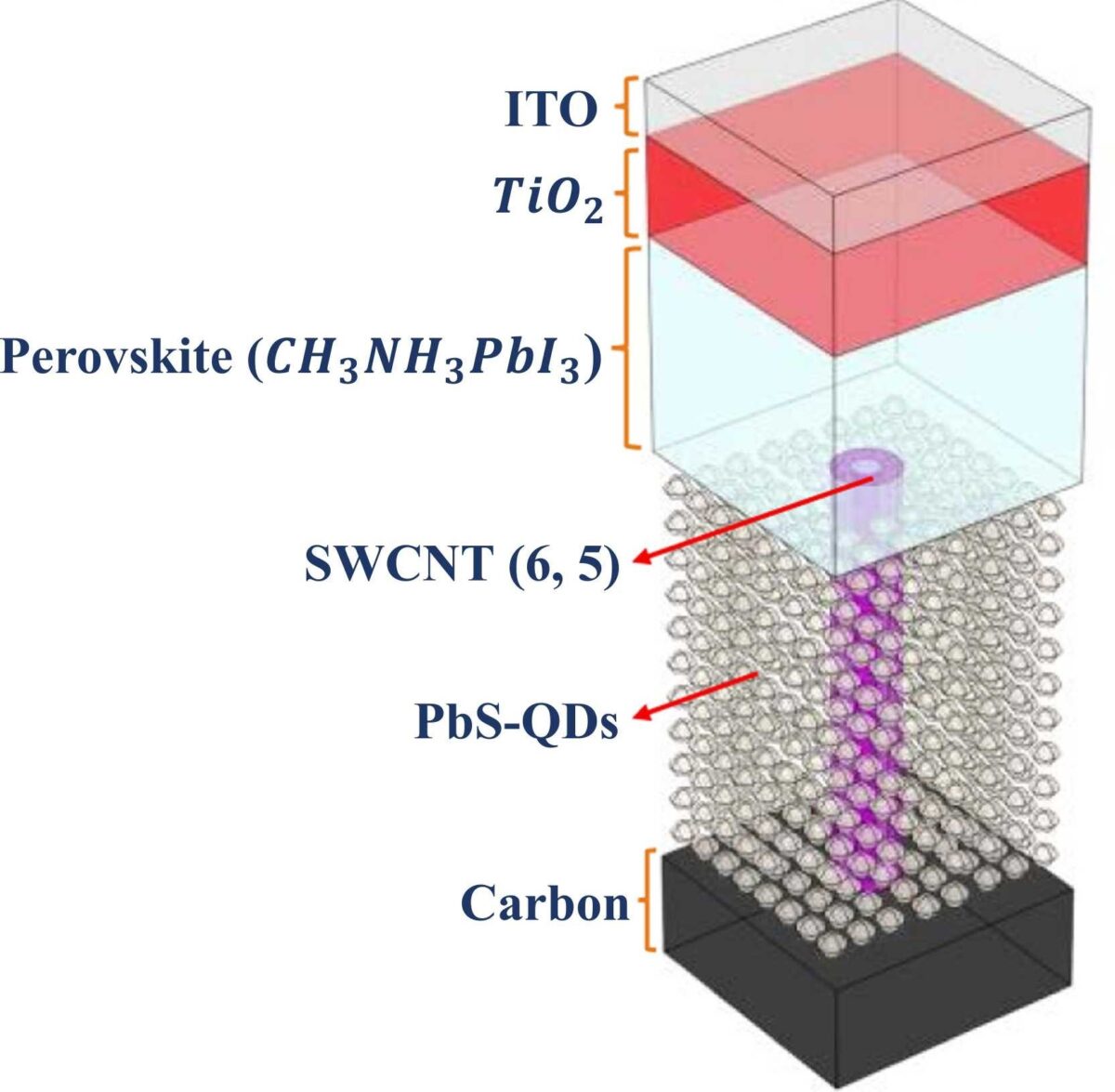Tarbiat Modares University (TMU) researchers in Iran have developed a perovskite solar cell using a single-walled carbon nanotube (SWCNT) hole transport layer (HTL). This SWCNT, a twisted graphene sheet hollow cylinder, enhances hole transport within the cell. The researchers surrounded the nanotube with lead sulfide colloidal quantum dots (PbS-CQDs).
“The mentioned materials can absorb sunlight well and in turn increase absorption and carriers' generation in the structure, thereby increasing the power conversion efficiency,” said the researchers. “In addition, since the carriers’ lifetime in PbS-CQDs material is close to 2000 ns, this causes less recombination of electrons and holes in the structure, which in turn leads to the increase of open-circuit voltage in the system.”
The researchers constructed the cell using a carbon contact, with the SWCNT serving as the hole transport layer (HTL). The cell's structure includes an absorber using MAPbI3 perovskite material, a titanium dioxide (TiO2) electron transfer layer (ETL), and a top contact composed of indium tin oxide (ITO).
“After finding the optimal length of SWCNT and HTL height, we start to sweep the center-to-center distance (CCD) between nanotubes of adjacent unit cells from 5 nm to 30 nm,” the researchers said. “The band gap of the selected SWCNT with the mentioned characteristics is equal to 1.3 eV.”
The research team determined that the optimal cell configuration and performance resulted from PbS-CQDs fully surrounding the SWCNT, with the HTL height set at 800 nm.
This final cell design, supported by simulations, achieved a 19.98% power conversion efficiency, an open-circuit voltage of 0.94 V, a short-circuit current density of 24.45 mA/cm², and an 86% fill factor, addressing perovskite stability concerns for potential industry use.
The study, “Single-walled carbon nanotube as hole transport layer in perovskite solar cell: Efficiency enhancement,” was recently published in Energy Reports.
This content is protected by copyright and may not be reused. If you want to cooperate with us and would like to reuse some of our content, please contact: editors@pv-magazine.com.




1 comment
By submitting this form you agree to pv magazine using your data for the purposes of publishing your comment.
Your personal data will only be disclosed or otherwise transmitted to third parties for the purposes of spam filtering or if this is necessary for technical maintenance of the website. Any other transfer to third parties will not take place unless this is justified on the basis of applicable data protection regulations or if pv magazine is legally obliged to do so.
You may revoke this consent at any time with effect for the future, in which case your personal data will be deleted immediately. Otherwise, your data will be deleted if pv magazine has processed your request or the purpose of data storage is fulfilled.
Further information on data privacy can be found in our Data Protection Policy.